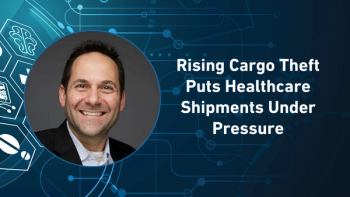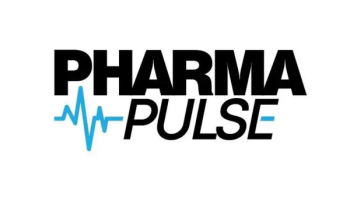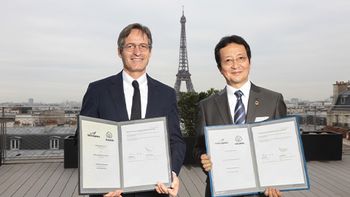
Emission-Reduction Strategies That Save Money and Preserve Performance
In the fourth part of his video interview with Pharma Commerce Editor Nicholas Saraceno, Nate Chenenko, principal with Ducker Carlisle, shares best practices for reducing greenhouse gas emissions across distribution channels without disrupting supply chain efficiency.
In a video interview with Pharma Commerce, Nate Chenenko, principal with Ducker Carlisle, sheds light on the critical issue of Scope 3 emissions and their growing relevance in the pharmaceutical industry, particularly across warehousing, packaging, and outbound transportation.
Chenenko defines Scope 3 emissions as all indirect emissions that occur after a pharmaceutical product is manufactured. While many companies focus on the sustainability of raw material sourcing and production (classified as Scope 1 and 2), Scope 3 encompasses everything that follows: storing products in warehouses, packaging them, transporting them to market, and ultimately, their end-of-life disposal. Although these post-manufacturing steps may not seem like the largest contributors to a company’s carbon footprint, they are significant, and frequently overlooked.
What makes Scope 3 emissions particularly challenging for pharma manufacturers is their indirect nature and the reliance on external logistics and supply chain partners. However, Chenenko emphasizes that these areas closely align with the day-to-day operations of supply chain teams, making Scope 3 an accessible and actionable area for emissions reduction. For instance, optimizing packaging materials, choosing greener transportation methods, and reducing energy consumption in warehouses are all tangible ways companies can drive impact.
Importantly, ignoring Scope 3 emissions not only undermines comprehensive sustainability efforts but also excludes a large portion of stakeholders responsible for distribution and logistics. Chenenko argues that targeting Scope 3 emissions allows for faster, more practical sustainability gains than commonly assumed, and presents a strategic opportunity for pharma companies to align environmental goals with operational priorities.
In conclusion, Chenenko advocates for a more holistic sustainability strategy that fully integrates Scope 3 emissions. By engaging supply chain stakeholders and taking action across the post-manufacturing lifecycle, pharmaceutical companies can make meaningful progress toward their environmental goals while enhancing overall supply chain efficiency.
He also comments on the specific metrics can pharma companies realistically track today to measure distribution-related sustainability performance; how manufacturers can overcome the data gaps from suppliers and third parties when aiming for sustainability certifications or ESG reporting compliance; best practices for reducing greenhouse gas emissions across distribution channels without disrupting supply chain efficiency;how regulatory expectations and customer pressure will shape sustainability efforts in pharma logistics in the future; and much more.
A transcript of his conversation with PC can be found below.
PC: What best practices or innovative strategies have you seen in the industry for reducing greenhouse gas emissions across distribution channels without disrupting supply chain efficiency?
Chenenko: Our favorite case studies, as you mentioned, improve greenhouse gas emissions, keep the supply chain flowing as normal, and I'll add one more: they will save you money in many of these cases. I've got a few examples, just based on our standard three phases of the distribution process. We'll start with warehousing, then we'll cover packaging and transportation.
On the warehousing side, a really simple one is there are companies that come around and compact trash. You could have a trash compactor in your warehouse. Those are pretty expensive, or you can pay a company to come smash the trash in a dumpster that's outside your facility. Now, instead of making four trips to the landfill, you're making one. That probably saves you a little bit of money. Your waste hauler may appreciate it, they may charge you a little bit less, and it saves you a lot of emissions, because that's one truckload instead of four truckloads—the extra weight does not even come close to offsetting the additional miles from running four trailers or four trucks.
If you want to make this more complex and make a bigger dent, you can search for—as one of our clients has done—a waste disposal site that will incinerate waste for power generation. Just incinerating for power generation is an improvement there. On the other hand, in some cases, those incineration sites may be much further away than the landfill, so being able to do that whole business case to unlock all of that, that's a great way to you can reduce your emissions. It covers your warehousing. It definitely does not disrupt your supply chain efficiency. We have to be careful about the business case there.
Moving on to packaging, many companies use returnable containers to minimize single-use or disposable products. There's a side benefit to returnable containers, which is that they often have a side effect of reducing damages, so crushed box corners, products that fall off the pallet, the use of a bunch of plastic to wrap a pallet—if you're using returnable as you can often eliminate a lot of that. When you can eliminate those damages, then you also, sort of by accident, reduce some of the Scope 1 and 2 emissions, because you no longer have to rebuild or remanufacture, reproduce the product that you just destroyed, or you don't have to repackage it. Returnable containers are pretty simple. Transitioning to returnable containers is tricky at first, and can be short-term disruptive, but can be long-term value add, because often, returnable containers are also a productivity boost and a long-term cost savings, if you are good about tracking the containers.
If you want to make an even bigger investment, especially to your packaging operations, you can use something like a box-on-demand machine that will construct a box exactly to your specifications. I'm sure many people watching or listening are familiar with this concept, but imagine you have a 12x12-inch product. The box-on-demand machine will make you a 12.1 by 12.1-inch box, so you save a lot of excess packaging material, and ultimately, over a long time frame, this has a sustainability impact. It also saves you cost, and it saves you a lot of labor, because a lot of these machines will automatically box the product and pack it. That's a little bit more useful for shipments direct to an end customer, or for retail packaging, rather than mass packaging operations, it tends to be fairly expensive.
The final category of best practices or case studies that I'll talk about is transportation. Many of our clients are switching to electric trucks for transportation. This is not disruptive to supply chain efficiency if you do it in the right locations. One of the best places to do this is in Southern California or Phoenix, AZ, or Dallas, TX. We're looking for fairly high traffic areas where the miles driven are low enough that the truck can do the entire distribution route without recharging, and then it will recharge on a shift break or overnight, and then do it again the next morning. We like those high-traffic areas because it prevents a lot of diesel idling and also the high traffic—although nobody likes high traffic, it sort of, by definition, keeps the mileage low.
A lot of our clients have been switching over to electric trucks in those areas and working with their transportation providers to do that. If you really want to make a big dent in transportation savings, though, you have to reduce your reliance on air freight. Although air freight is not a big portion of the supply chain, it is astronomically problematic from a sustainability perspective. We have worked with clients to do creative things like adding a little bit of inventory to the warehouse network in order to reduce their reliance on air freight to expedite orders out. You may have encountered this in your personal lives, where you're looking at, okay, I can get this from Amazon in two days and it'll come on a truck, or I can get it tomorrow, and it'll come via a plane from a warehouse somewhere on the West Coast. That adds a lot of emissions. If Amazon was a little bit better about stocking closer to you, they could get it for you the next day on a truck. That's not disruptive to the supply chain, but involves quite a bit of supply chain retooling, but can be also a cost savings, and is a huge way to reduce your emissions.
Newsletter
Stay ahead in the life sciences industry with Pharmaceutical Commerce, the latest news, trends, and strategies in drug distribution, commercialization, and market access.




